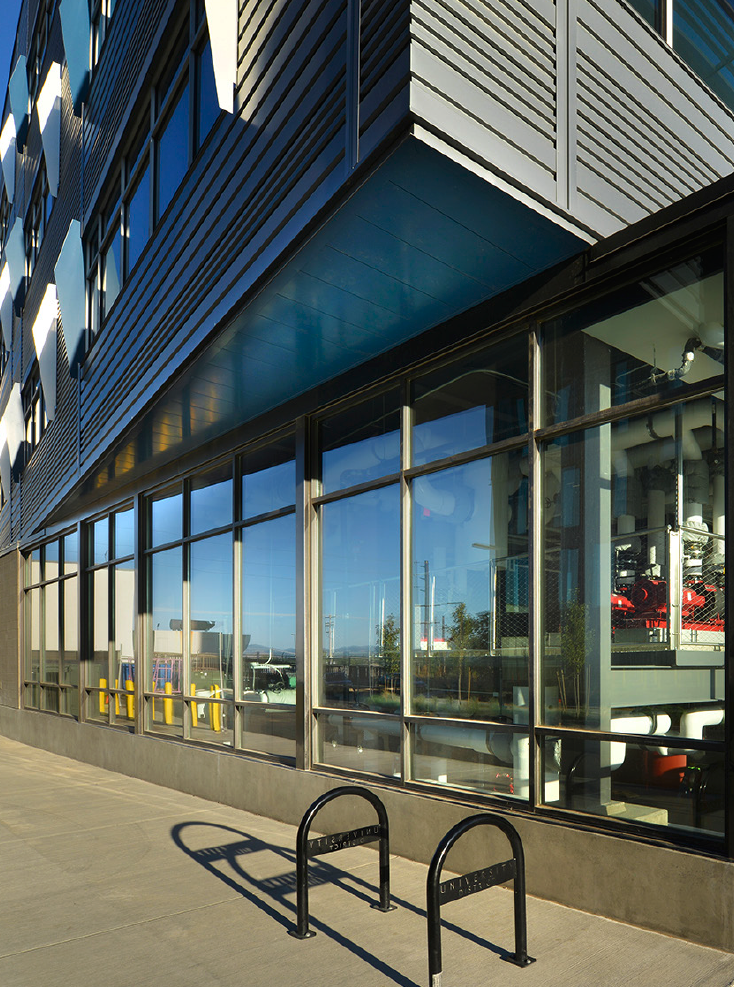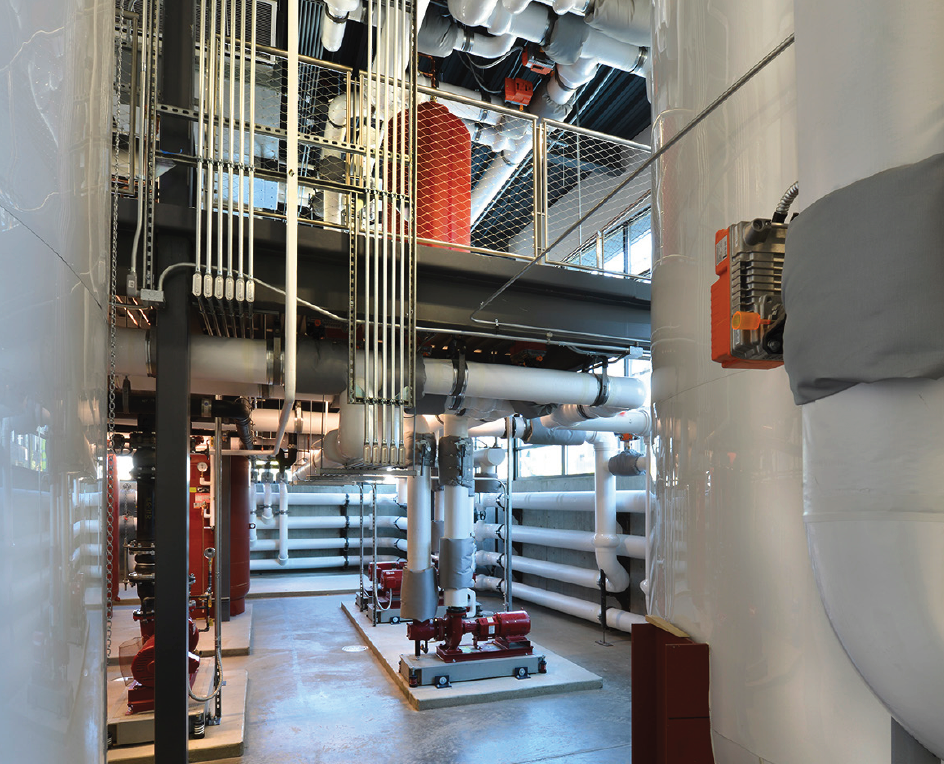
The South Landing development in Spokane, Wash., demonstrates how utility and building operators can work together to create transformative new models for energy, the built environment, and sustainability that reduce energy demand and increase energy efficiency.
Commercial buildings are responsible for 40 percent of all energy demand. This demand is exacerbated by each building constructed individually with a dedicated heating and cooling system and its own grid connection. Avista and McKinstry have turned this commercial-building status quo on its head by introducing a new shared energy model called an Eco-District, where a centralized heating, cooling, and electrical system serve the energy needs of the entire group of buildings.
The South Landing Eco-District’s shared energy model will initially provide energy to the zero-carbon, zero-energy Catalyst building and adjacent Scott Morris Center for Energy Innovation. And, as the development is built out, the Eco-District will further meet the energy needs of additional buildings in the area.
In addition to the central plant, the South Landing Eco-District features on-site solar panels, battery storage, thermal storage, and thousands of sensors installed throughout the buildings to track conditions in real-time.
Sharing, Communicative and Flexible Buildings

The South Landing development’s innovative energy systems allow the buildings to communicate with each other and the energy grid. This will enable building operators and the utility to share information so they can actively manage energy to maximize the build efficiency and make the best use of the grid, all while keeping building occupants comfortable.
These systems are four-times more efficient than a traditional system, and they’re also far more flexible. At night, for instance, empty buildings enter conservation mode to reduce energy needs. When people are sleeping and residential demand falls, the Eco-District can pull energy from the grid, recharging the onsite batteries and thermal tanks at times when there is excess grid capacity. This energy is stored and used to operate the building when community energy demand is high.
Such flexibility lets the utility make the best use of the existing grid and delay costly construction to meet energy demand. This helps make energy more affordable for everyone.
